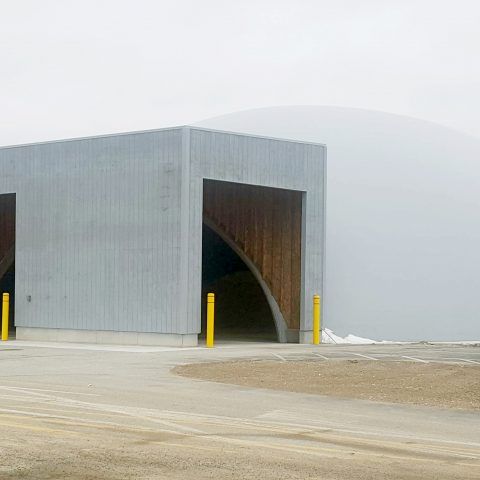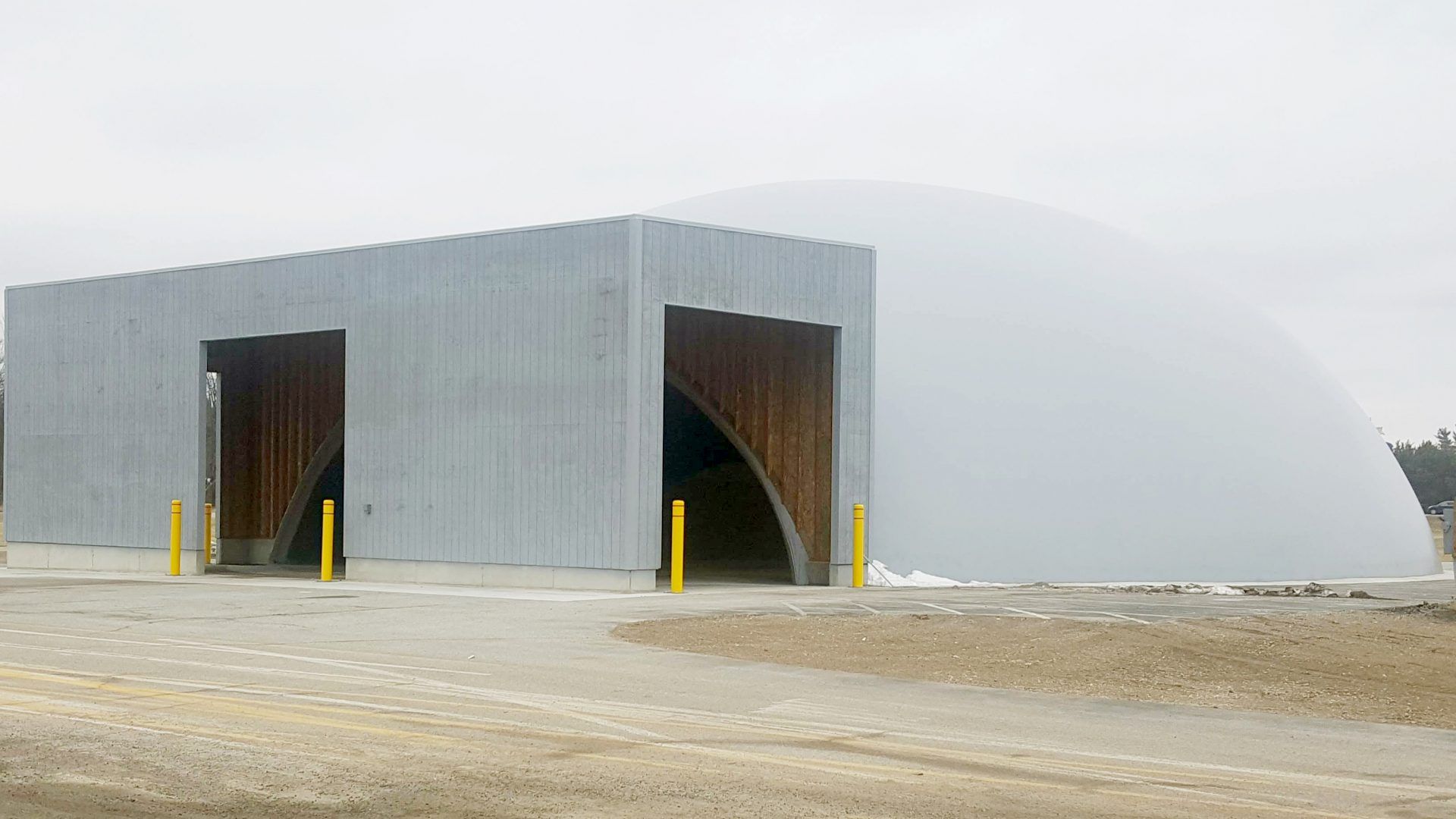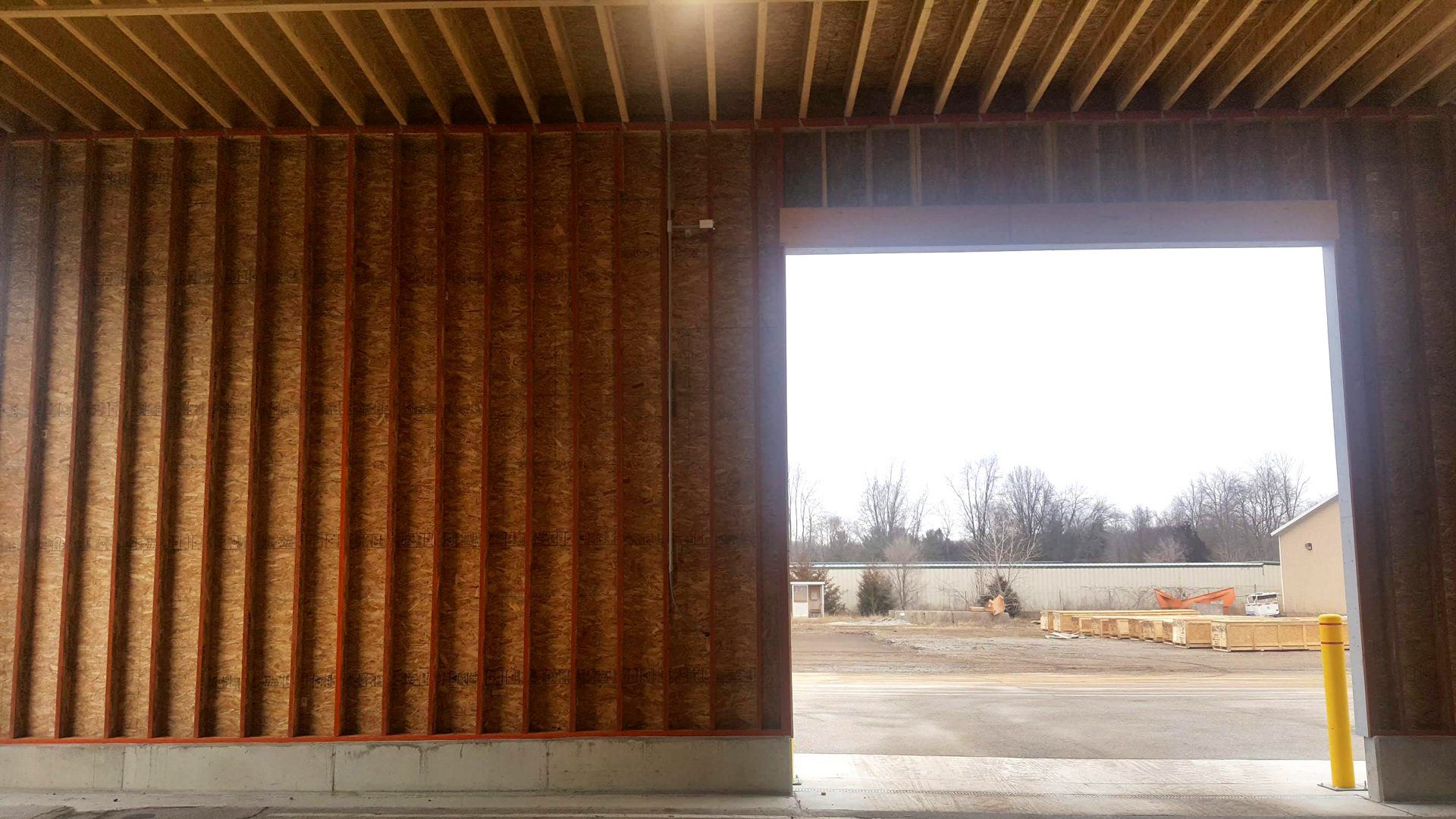Scope of Work
| Domes | Height | Diameter | Capacity |
|---|---|---|---|
| #1913 | 35ft | 120ft | 3,500t |
| #1913 | 10.7m | 36.6m | 3,500t |
| #1913 | 35ft | 120ft | 3,500t |
| #1913 | 10.7m | 36.6m | 3,500t |
ITR Concession Company (ITRCC) utilizes eleven salt storage facilities along the 157 miles of roadway it maintains in northern Indiana, each storing the amount of salt needed for a season’s worth of winter weather on a specific stretch of highway.
But just like salt breaks down ice, it also deteriorates wood, and in 2019 existing wooden salt-storage domes near South Bend and Granger, Indiana, were past their prime.
“When faced with replacing these domes, the choice to go with concrete structures was all about longevity,” said civil infrastructure manager Brian Cherry. ITRCC was looking to reduce lifecycle maintenance costs; both its wooden salt domes and rectangular storage facilities with concrete walls and tarp roofs require regular upkeep.
ITRCC management decided on steel-reinforced concrete domes from Dome Technology. “Looking at the numbers, it was more economical over the next 60 years going with domes, partly to reduce upkeep and partly because concrete domes would work well if automation like buckets or conveyors were added later,” Cherry said. As a former employee with reclaim-expert Laidig, Cherry had seen conveyance systems work seamlessly with Dome Technology structures.
Dome Technology built two elliptical salt-storage domes for ITRCC, each standing 90 feet by 120 feet across and 35 feet tall. Maintenance managers determined the 3,500-ton capacity for each of the domes based on the estimated amount of salt needed to service roads in those areas.
For optimal accessibility, the dome features a rectangular entry with three truck bays measuring 20 feet wide and 20 feet tall, and front-end loader facilitates loading and reclaim.
Inside each dome, salt is piled against the wall, clearing up floor space for reclaim. Piling product in this way makes the dome an ideal option as the reinforced-concrete dome is monolithic; no joints or beams form the roof, so forces from stored product are easily tolerated and spread across the shell.





